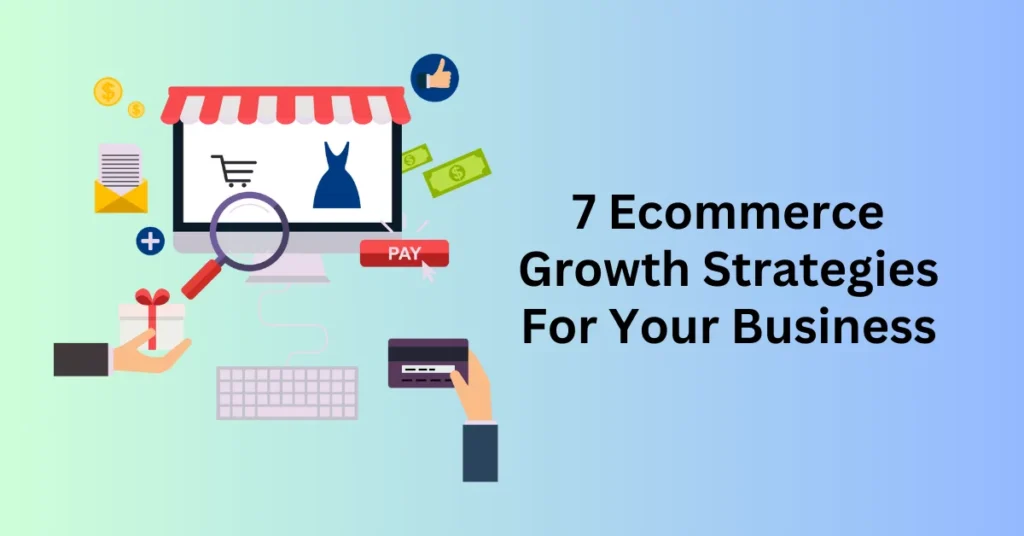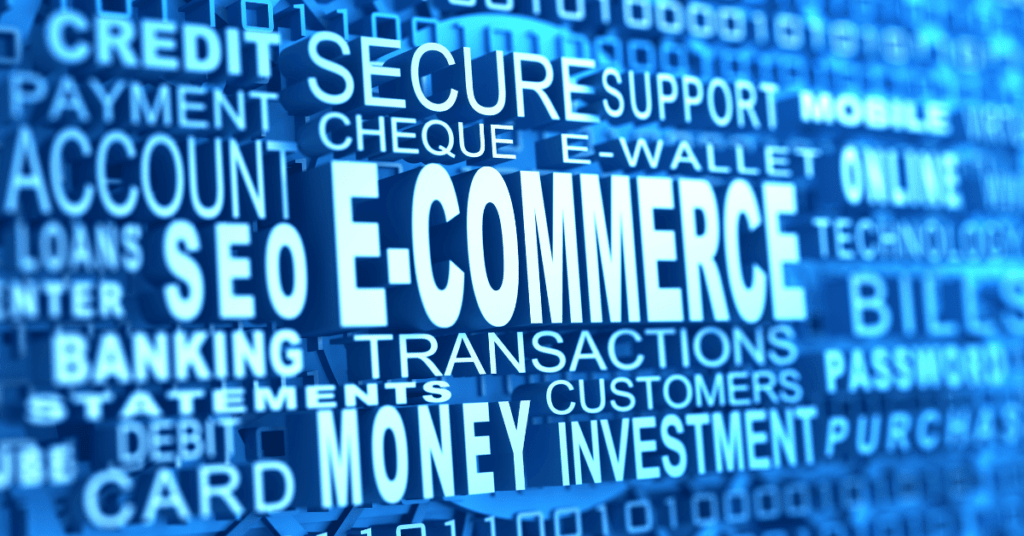Launching a basic online store can be accomplished swiftly and with relative ease. Realistically, nearly anyone can set up an online shop. However, transforming that store into a profitable ecommerce brand that consistently generates sales and fosters customer loyalty is a much more challenging. Achieving this requires a significant investment of time, effort, and a well-thought-out ecommerce growth strategy.
If you’re an ecommerce store owner aiming to scale your business, you’ve arrived at the right place. In this article, we will get into seven effective tactics to help you craft a strategy for expanding your online store. These strategies are designed to boost your sales, enhance customer retention, and establish your brand as a leader in the competitive ecommerce landscape. Whether you’re just starting out or looking to take your existing store to new heights, these insights will provide you with the tools and knowledge you need to succeed.
Start Your Print-On-Demand Businesss Today
Why Do You Need An Ecommerce Growth Strategy?

The e-commerce landscape has evolved significantly in recent years. While online shopping was already integral to our daily lives before 2020, the COVID-19 pandemic accelerated ecommerce growth exponentially. This surge in online shopping has shown no signs of abating, creating numerous opportunities for e-commerce business owners. However, it has also intensified competition. To stand out and achieve substantial profits from your online store, a well-thought-out plan, or a robust e-commerce growth strategy, is essential.
A solid growth strategy helps you in multiple ways. It enables you to continually improve your store’s offerings, making your marketing campaigns more targeted and effective. Additionally, it positively impacts customer retention and loyalty, which are crucial for long-term success.
Another critical reason for having an ecommerce growth strategy is the evolving nature of social media marketing. In the past, online store owners heavily relied on paid online advertising to drive sales. The concept was straightforward: increase brand visibility, and sales would follow. However, with tech giants like Apple and Google introducing more privacy-oriented features, achieving success with paid ads has become more challenging and expensive. Consequently, business owners must adopt a more holistic approach to their e-commerce operations.
This means integrating various aspects of your business—such as product development, customer service, and content marketing—into a cohesive ecommerce growth strategy. This comprehensive approach helps identify problem areas and uncovers new opportunities for expansion, ensuring your business can adapt to changing market conditions.
7 Ecommerce Growth Strategies For Your Business
Now that we’ve explained the importance of having an effective ecommerce strategy, let’s get into the actionable steps. We’ve compiled seven exceptional ecommerce growth tactics that you can integrate into your strategy.
Some of these strategies are designed to enhance the loyalty of your existing customers, while others are geared towards attracting new ones. Regardless of their focus, each tip on this list will move you closer to achieving ecommerce success. Whether your goal is to boost customer retention or to expand your customer base, these strategies will provide you with practical and effective solutions to grow your online store.
Start Your Print-On-Demand Businesss Today
1. Define your brand
Defining your brand might seem straightforward if you already own an e-commerce store. You probably have a sense of your target audience, brand colours, and fonts. However, truly understanding what your e-commerce brand represents on a deeper, more meaningful level is crucial. This involves not just the basics but delving into your brand’s core values and personality.
Doing this will greatly enhance your ecommerce growth strategy, allowing you to expand your target audience, personalize the customer journey, and discover new sales channels.
Brand Values and Story
One of the most vital aspects of defining your brand is identifying its core values. These are the guiding principles that will remain constant even as your business evolves. In today’s market, where consumers are increasingly conscientious about the ethics and practices of the companies they support, having a clear set of values is essential.
Consumers are willing to abandon brands that do not align with their values, as seen in recent boycotts affecting large global brands like Starbucks and McDonald’s. Conversely, customers are often willing to spend more on businesses that reflect their own values and share a common purpose. By clearly defining your brand values, you can resonate more deeply with your audience and communicate more effectively.
For inspiration, you can look at how other companies have defined their values. These examples can provide a framework for identifying what is most important to your brand and how you can integrate these principles into your business operations and marketing strategies.
Brand Personality
While brand values define what your brand stands for, brand personality and tone of voice determine how you communicate these values to your target audience. Although these elements may not directly drive sales, they play a crucial role in your marketing and social media strategy.
Your brand personality and voice influence how you interact on social media, the type of user-generated content you encourage, and the humour or memes you use. For example, Duolingo has a distinct personality and tone that is bold, topical, irreverent, and humorous. This resonates well with its primarily young audience—approximately 54% of Duolingo visitors are under the age of 35, according to Similarweb.
Duolingo’s use of online trends and memes makes its communication relatable and approachable to its audience. Whether you are targeting Gen Z, retirees, or Millennial moms, your brand language should reflect the mannerisms and tone of your audience to some extent. This relatability helps build customer loyalty and enhances your marketing efforts when acquiring new customers.
2. Expand to Related Niches
Having a clear understanding of your brand’s core values can significantly aid in expanding into new, profitable niches. For instance, if your business specializes in selling trending products for hikers and embodies a love for nature and adventure, you can consider diversifying into related niches such as rock climbing, biking, or mountaineering. This strategic alignment ensures that any new products or niches you explore will resonate with your existing brand identity and customer base.
The global e-commerce market is highly competitive, with numerous online stores offering similar products. Therefore, selecting a unique niche within this vast space is a crucial element of a successful e-commerce strategy. By identifying a distinctive niche, you can differentiate your business from competitors and attract a specific segment of customers who are more likely to be loyal to your brand.
A well-defined niche not only enhances brand loyalty but also guides your e-commerce marketing strategy. This focus allows you to tailor your marketing efforts to effectively reach and engage your target audience, ultimately driving sales and growth.
However, it’s essential to recognize that niches can fluctuate in popularity. Staying attuned to industry trends is vital for maintaining relevance and profitability. For example, if you own an apparel store and are seeking the most profitable niches, regularly researching and analyzing the most popular niches can help you identify new opportunities for ecommerce growth and adaptation. By remaining proactive and responsive to emerging trends, you can ensure that your business continues to thrive in the dynamic e-commerce landscape.
3. Choose The Right Ecommerce Platform
Your e-commerce success is also heavily influenced by the platform and tools you use. Many entrepreneurs begin their e-commerce journey with beginner-friendly platforms that offer substantial support for new sellers. These platforms, such as Shopify or BigCommerce, allow for quick and easy store setup with minimal technical knowledge, thanks to their user-friendly website builders and extensive learning resources.
However, as your ecommerce site experiences significant growth and you begin to consider scaling your business and enhancing the customer experience, it may be time to transition to an open-source platform. Platforms like WooCommerce or Magento are typically not recommended for beginners due to the longer setup times and the technical knowledge required. Nevertheless, for those with experience in running e-commerce businesses, open-source platforms offer numerous long-term benefits.
However, with open-source platforms, you can customize your e-commerce website extensively by mixing and matching different plugins and tools. This increased customization capability allows you to tailor your site to meet specific business needs and improve the overall customer experience. Additionally, open-source platforms provide more control over expenses related to subscription fees, plugins, and extensions, potentially leading to significant cost savings.
If the technical aspects of migrating your e-commerce website seem daunting, remember that you don’t have to tackle everything on your own. Hiring developers to assist with the technical side can ensure a smooth transition, allowing you to focus on other critical aspects of growing your business.
4. Simplify Your Customer Journey
According to McKinsey research, the key to e-commerce success lies in personalization. A striking 71% of online shoppers expect personalized experiences when purchasing products. Moreover, businesses that grow faster derive 40% more revenue from personalization than their slower-growing counterparts. This underscores the importance of personalization in increasing average order value and enhancing customer satisfaction.
Where to Start with Personalization
Begin with your existing customers. Gather insights about who they are, where they’re from, their age, and gender. Additionally, investigate how they interact with your brand—how they found you, the channels they use to engage with your business, and the duration of their buying process. Understanding your loyal customers’ profiles enables you to group them into segments based on shared behaviours or characteristics.
Creating Segmented Marketing Campaigns
Once you have segmented your customers, you can start delivering personalized, segmented content through email marketing or social media marketing. Then, tailor marketing campaigns to specific segments or leverage influencer marketing to reach targeted audiences. Besides, you can experiment with different marketing channels to determine which ones work best for your priority segments. This targeted approach ensures that your marketing efforts resonate more deeply with your customers, driving higher engagement and conversion rates.
Offering Custom Personalized Products
To take personalization a step further, consider offering custom personalized products. This can significantly enhance the customer experience by making them feel valued and understood. Custom products can range from personalized recommendations based on past purchases to items that customers can design or customize themselves. This level of personalization not only increases customer satisfaction but also fosters loyalty and encourages repeat purchases.
Implementing Personalization Strategies
To personalize your customer experience effectively, start by collecting data using tools like customer surveys, website analytics, and purchase history to gather comprehensive insights. Next, segment your audience into groups based on shared characteristics and behaviours. This segmentation allows you to create targeted marketing campaigns tailored to each group’s specific interests and needs, using personalized email marketing, social media ads, and relevant content.
Leverage personalization tools and platforms to automate and optimize this process, ensuring personalized recommendations, content, and product suggestions are delivered efficiently. Enhance customer connection by offering custom products that they can personalize themselves. Maintain a continuous feedback loop by collecting and analyzing customer feedback to assess the effectiveness of your personalization strategies, and adjust your approach based on responses and market trends.
By focusing on personalization, you can create a more engaging and satisfying shopping experience for your customers. This approach not only boosts sales and customer loyalty but also sets your brand apart in the competitive e-commerce landscape.
5. Enhance Your Social Media Marketing Strategy
Social commerce, which involves selling products directly on social media platforms, has become a crucial part of the e-commerce landscape. With social commerce revenue predicted to reach $6.2 trillion by 2030, integrating social media into your ecommerce growth strategy is essential.
Integrating Commerce into Your Social Media
There are numerous ways to incorporate commerce into your social media presence:
- Shoppable Ads: These ads allow users to purchase products directly from the ad without leaving the social media platform.
- Social Media Checkouts: Platforms like Instagram and Facebook offer checkout features that streamline the purchasing process.
- Social Commerce Plugins: Tools and plugins that integrate e-commerce capabilities into your social media profiles.
Showcasing your products on social media is an excellent way to promote them. You can encourage customer feedback and leverage user-generated content to build trust and authenticity. Besides, User-generated content, such as customer reviews, testimonials, and photos, can significantly enhance your brand’s credibility.
Expanding Reach and Engaging New Audiences
Social media offers a unique opportunity to reach potential shoppers who might not visit your website or even know about your brand. Effective digital marketing on social media relies heavily on strong visual content. High-quality visuals attract attention and encourage engagement. However, you don’t need to spend excessively on professional photoshoots. Here are some cost-effective tips for creating appealing visuals:
- Use Natural Lighting: Take advantage of natural light to enhance the quality of your photos.
- Simple Backdrops: Use clean, simple backgrounds to make your products stand out.
- Mobile Photography: Modern smartphones have excellent cameras that can produce high-quality images.
- Editing Apps: Utilize free or inexpensive photo editing apps to enhance your images.
Building a Strong Social Media Presence
To keep your audience engaged and informed about your products, maintain a consistent posting schedule. Engage with followers by responding promptly to comments and messages, which helps build a community around your brand. Make your social media presence more interactive by using polls, quizzes, and live videos. Collaborate with influencers who align with your brand values to reach a broader audience and enhance your credibility. Regularly analyze your social media performance with platform analytics tools and adjust your strategy based on what works best for your audience.
6. Expand To Different Sales Channels
To effectively reach your customers, you need to use the channels they frequent. Embracing omnichannel commerce can be a powerful strategy for growing your business. Omnichannel commerce involves integrating all possible sales channels to provide customers with a seamless shopping experience across various platforms.
Here are some options to consider:
- E-commerce Marketplaces: If you only have a website and social media presence, consider expanding to e-commerce marketplaces like Etsy, Amazon, or eBay. These platforms can help you reach a wider audience.
- Mobile Optimization: Ensure your website is optimized for mobile devices. Many customers prefer shopping on their smartphones, so a mobile-friendly site can enhance their experience.
- Email Marketing: Develop an engaging email marketing strategy to communicate directly with your customers. Use personalized emails to keep them informed about new products, promotions, and updates.
When adding new channels, prioritize quality over quantity. It’s crucial to focus on the platforms where your target audience is most active. For example, if you’re targeting Gen Z, adding Facebook might not be as effective as utilizing Instagram or TikTok. Use customer insights to determine the best channels to reach your audience.
7. Optimize Your Processes
Every business owner knows that time is money, and efficient business processes are essential for sustainable growth. As your business succeeds and sales increase, you’ll realize you can’t do everything yourself. Handling every task—from packing orders to creating social media content—can lead to burnout and inefficiencies.
Focusing on Big-Picture Tasks
To avoid burnout and improve efficiency, focus on big-picture tasks such as key performance indicators (KPIs) and customer experience. Delegating or automating routine tasks can free up your time for strategic decision-making.
Implementing E-commerce Automation
E-commerce automation can streamline many aspects of your business. Automated systems for order fulfillment can handle processing and fulfillment, reducing manual labour and errors. Besides, you can implement chatbots or automated email responses to manage common customer inquiries, ensuring timely and consistent communication. Also, you can utilize inventory management software to monitor stock levels, automate reordering, and prevent stockouts or overstocking.
On the other hand, you should automate your marketing campaigns, including email marketing, social media posting, and ad placements, to maintain consistent and timely outreach. If automation isn’t sufficient, consider hiring additional staff or outsourcing tasks.
This can include virtual assistants for administrative tasks, customer support, or social media management; freelancers for specific projects like content creation, graphic design, or website development; and full-time employees for roles requiring ongoing attention and expertise, such as operations management or marketing.
By optimizing your business processes and utilizing automation, you can ensure your business runs smoothly and efficiently. This allows you to focus on ecommerce growth strategies and improving the overall customer experience, ultimately leading to sustained success.
Automate Your Processes With Print-On-Demand
For those selling custom products, automating tedious and time-consuming business processes such as producing, packing, and shipping can be achieved easily and quickly by partnering with a print-on-demand provider.
Print-on-demand is a business model that allows you to sell your designs without the hassle of managing inventory, packing, or shipping. Here’s how it works: you create a design, select a product from your print-on-demand provider’s catalogue, and add it to your store. When a customer makes a purchase, the provider prints the design at their facility, and then packs and ships the product directly to the customer.
Many ecommerce companies utilize print-on-demand providers to streamline their production processes and reduce costs. Although it might feel daunting to entrust your customer experience to a third party, the quality of your partner can make all the difference. With a reliable partner, your print-on-demand products are well taken care of.
Final Thoughts: 7 Ecommerce Growth Strategies For Your Business
Did you find this list useful? If you have any questions about building an effective ecommerce business strategy, let us know in the comments!
Don’t forget that building a successful ecommerce business doesn’t happen overnight. If you encounter challenges or difficulties on your ecommerce journey, don’t be discouraged—every idea that doesn’t work out as planned might just lead you to something bigger and better.
Just look at Printful. Its founder, Lauris Liberts, started his ecommerce journey over a decade ago, printing posters in his living room and selling them on his small ecommerce store, Startup Vitamins.
The challenges he faced led to the creation of Printful. And now, 11 years later, Printful is one of the leading companies in the global print-on-demand industry.
You can never know where your passion for ecommerce might lead you if you do the work and stick to your dreams. We’ll be here, rooting for you! Good luck!


